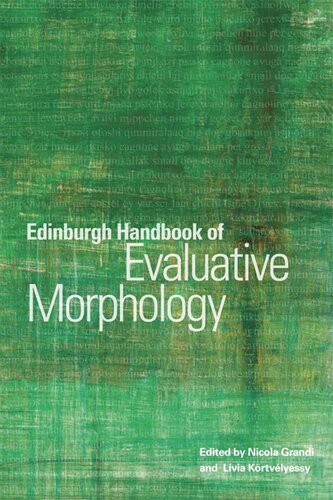

Most ebook files are in PDF format, so you can easily read them using various software such as Foxit Reader or directly on the Google Chrome browser.
Some ebook files are released by publishers in other formats such as .awz, .mobi, .epub, .fb2, etc. You may need to install specific software to read these formats on mobile/PC, such as Calibre.
Please read the tutorial at this link: https://ebookbell.com/faq
We offer FREE conversion to the popular formats you request; however, this may take some time. Therefore, right after payment, please email us, and we will try to provide the service as quickly as possible.
For some exceptional file formats or broken links (if any), please refrain from opening any disputes. Instead, email us first, and we will try to assist within a maximum of 6 hours.
EbookBell Team

4.1
80 reviewsWith examples drawn from over 200 world languages, this ground-breaking volume presents a state-of-the-art overview of evaluative morphology. Offering an innovative approach to major theoretical questions, the Edinburgh Handbook analyses the field from a cross-linguistic perspective, considering semantic, pragmatic and sociolinguistic aspects, as well as word-formation processes and evaluative morphology acquisition. Complementing the synchronic approach with a diachronic perspective, this study establishes a picture of intriguing diversity in evaluative morphology manifestations, and offers a comprehensive analysis of the situation in dozens of languages and language families.
Divided into 2 distinct parts, the handbook begins with 13 chapters discussing evaluative morphology in relation to areas such as pragmatics, semantics, linguistic universals and sociolinguistics. The second part is comprised of descriptive chapters, broken into the following subsets: Eurasia, South- East Asia and Oceania, Australia-New Guinea, Africa, North America and South America.
The Handbook features 3 separate indexes detailing languages, names, subjects.